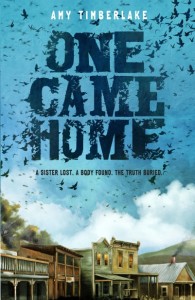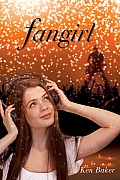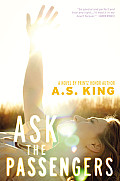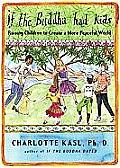Today I’m excited to participate in the blog tour for Angela Shelton, author of the new middle-grade fantasy series, The Adventures of Tilda Pinkerton. As a stop on the tour, I have one copy of Tilda to give away to someone who comments here by midnight (PDT), Friday, December 28. (U.S. and Canadian residents only please). (Please note: the giveaway is closed. Congratulations to April on winning.) Here’s a bit of information about the book and the author. Keep reading to find out what Shelton has to say about the challenges of writing fantasy for children.
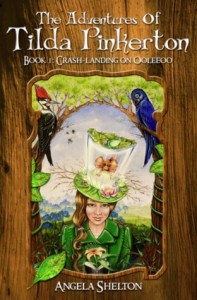 Synopsis: The Adventures of Tilda Pinkerton
Synopsis: The Adventures of Tilda Pinkerton
If you had a super power what would it be? Invisibility? The ability to fly? X-ray vision? What about the ability to make hats? Not regular hats but magical hats . . . hats that make people blossom, help them become the person they secretly wish they could be. Tilda Pinkerton has that ability. But will hat making help her save the universe from evil powers trying to destroy it? Things don’t look good, especially since Tilda can’t remember who she is or why she’s on the planet of Ooleeoo.
Somewhere out in the Sombrero Galaxy, Tilda Pinkerton is being hunted by the Keeper of Darkness. But Tilda isn’t worried. Of course that could be because she doesn’t remember who she is or what she’s doing on the planet of Ooleeoo. Even in the middle of cosmic danger, Tilda does what she does best: creates hats that make people . . . not better, but MORE of the person they are meant to be. When the mayor of Ooleeoo bans Tilda’s hats is he just being a curmudgeon or is he secretly working for the enemy? Can Tilda figure out who she is in time to save the galaxy?
The Adventures of Tilda Pinkerton is the perfect combination: it has a roller coaster ride of a story for middle-grade readers and the interesting addition of words to expand their vocabulary that will make parents (and teachers) happy. If your child is looking for a new series to enjoy The Adventures of Tilda Pinkerton may be the answer to her reading wishes.
Paperback: 272 pages
Publisher: Quiet Owl Books (July 31, 2012)
ISBN-10: 0615646778
ISBN-13: 978-0615646770
Twitter hashtag: #TildaPinkerton
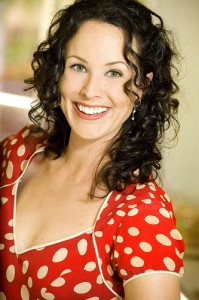
Author Angela Shelton
The Challenges of Writing Fantasy for Children
By Angela Shelton
Isn’t writing for children the easiest thing in the world?
Excuse me while I roll on the floor laughing. Sure, just start writing for kids. They’ll love it. Try the fantasy genre – it’s even easier!
Not.
Kids are Smarter than You Think
Despite some comments by wine guzzling mommy bloggers, the above statement is true. Kids are smarter than you think.
They don’t miss much either. One of the challenges in writing for them is to NOT dumb things down. If you write for children like baby talking to a two year old who can already speak in complete sentences, they will look at you like you have lost your fantastical mind.
We are in a time of dilemmas. On one hand, advanced learning levels are being lowered so that everyone can get a chance, not just the super smart kids. On the other hand, the New Common Core Standards are being implemented in many states, requiring larger vocabulary and advanced learning for all levels.
I lean towards the advanced learning being required. I’ve seen how kids will rise to the occasion, even kids with learning disabilities.
Don’t underestimate kids!
Who are you writing fantasy for?
I thought I was writing for 10-12 year-old girls. Apparently kids read up —which means younger kids are reading what older kids are meant to be reading and the older kids are reading Twilight. Yes, it’s true.
I’ve also seen that the biggest buyers of my book, The Adventures of Tilda Pinkerton are women 50+. Who knew?!
I spoke to a few twelve-year-old girls about my fantasy book. I asked them what they liked about it, what they were missing, and what they wanted more of.
They told me they wanted more “inappropriate things.”
That’s right. They wanted kissing, touching, naughty no-nos, and that unrequited angst you get from being in love with a vampire or werewolf. Puke.
The Adventures of Tilda Pinkerton is a clean read and a vocabulary builder. There is nothing naughty in it besides a few flirtatious scenes between Mayor Mudpie Melic and Belinda Balletomania (because of her very large bouncing bosom while ballet dancing).
So what are the challenges in writing for children? One of them is that some children grow up very quickly now and want to read and watch Twilight when you think they still want a fairytale!
What do you do about it?
Keep writing. Write what you want to read. So far, the kids who are reading my fantasy book are advanced reading boys and girls, age 8-9. That is the age group I thought Tilda would be too advanced for. I forgot—kids are smarter than you think and kids read up.
Plus, you may have been totally off base about what age you were writing for and a line of women 50+ may show up to get their book signed.
Number one rule—write what you want to read.
Angela Shelton is an author, actor, and public speaker. She has been writing since she was eight years old. Her first novel was adapted into the movie Tumbleweeds. Angela won a regional Emmy award for her portrayal of Safe Side Superchick in The Safe Side video series created by Baby Einstein’s Julie Clark. After living in Los Angeles for over a decade, Angela left the big city for a one-light country town to marry her first love and fulfill her dream of writing books in a barn house.
http://tildapinkerton.com/
Twitter – https://twitter.com/angelashelton
Facebook – https://www.facebook.com/AngelaSheltonFanPage
https://www.facebook.com/tildapinkerton
Angela’s Book Blog – http://magicalhatshop.com/
About Angela Shelton
Angela is an author, actor, and public speaker. She has been writing since she was eight years old. Her first novel was adapted into the movie Tumbleweeds. Angela won a regional Emmy award for her portrayal of SafeSide Superchick in The Safe Side video series created by Baby Einstein’s Julie Clark. After living in Los Angeles for over a decade, Angela left the big city for a one-light country town to marry her first love and fulfill her dream of writing books in a barn house.
Her Tilda Pinkerton books can be traced back to her childhood fear of dictionaries! Angela was a big believer in the “if I can’t spell it, how can I find it in the dictionary to learn how to spell it” school of thought. In fact, she was so frustrated by the uselessness of dictionaries that she destroyed several during her childhood. She eventually got over her fear of dictionaries (OK, she still hates them. But she learned to hide her antagonism for word books), and began writing. Her Tilda books contain a plethora (Go ahead, look it up. At least you know how to spell it!) of wacky words and definitions to expand the vocabulary of readers in a fun way. No dictionaries involved!


